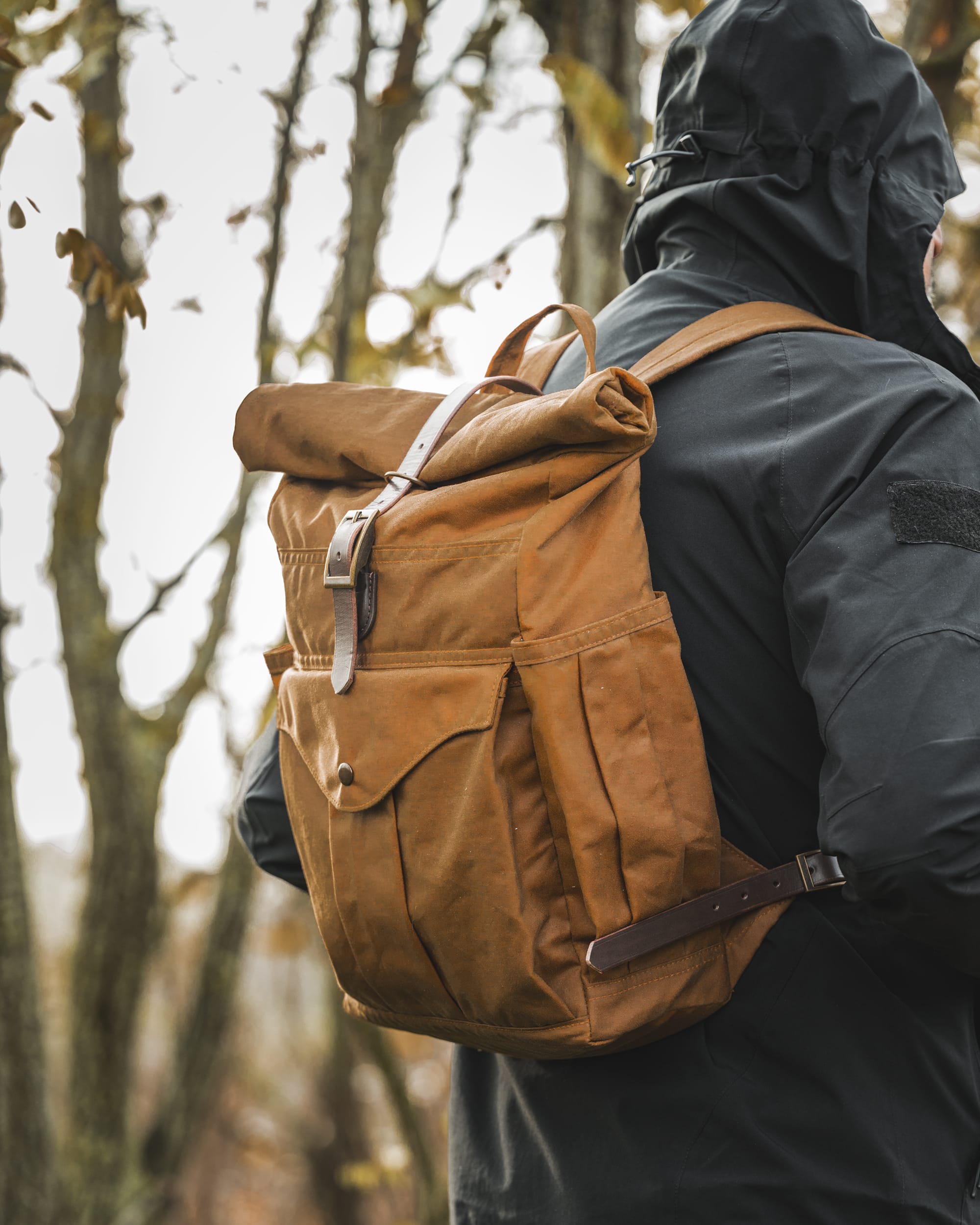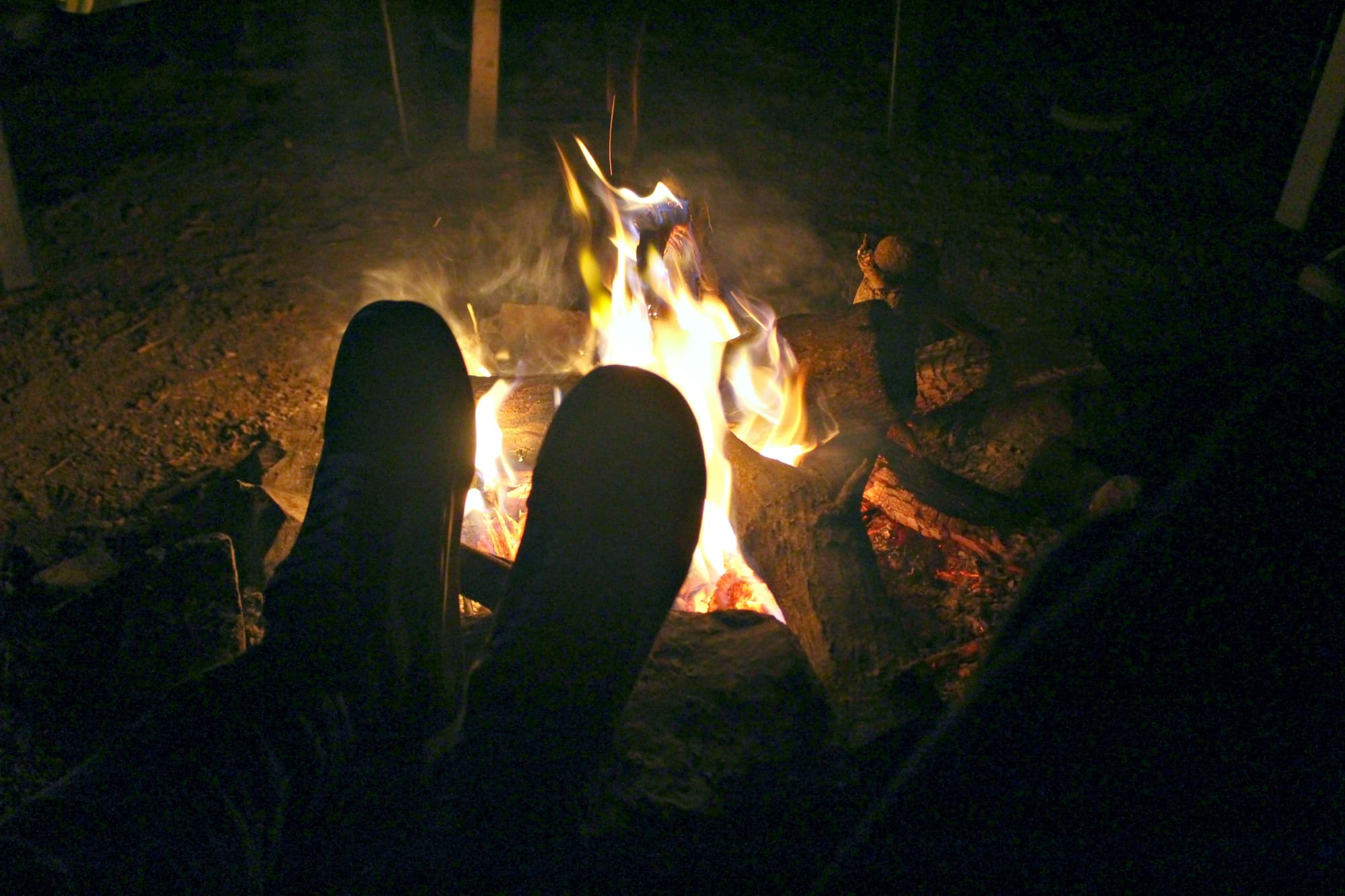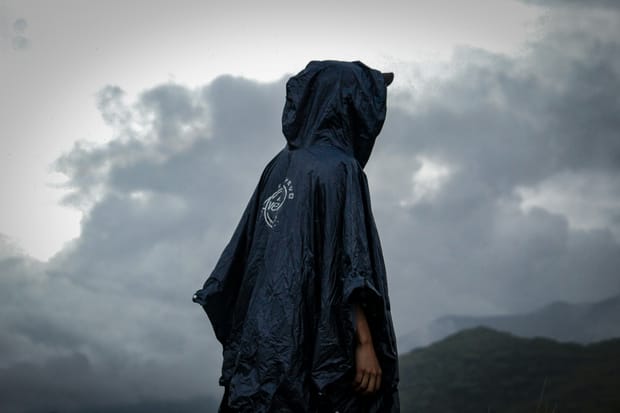Rain has a way of changing your plans. The woods darken, the air cools, and the ground begins to hold water in places you don’t expect. When the weather shifts like this, keeping your gear dry becomes less about comfort and more about preserving what you rely on. A few simple habits go a long way.
Start with your pack. Waxed canvas and oilskin shed water naturally, but they still benefit from attention. Brush off standing droplets before they soak in. If your pack has a rolltop, tighten it with care. A well-rolled top creates a solid barrier against rain. Large outer pockets should carry items that tolerate moisture. Keep the essentials on the inside where they remain untouched.

Separate your gear. A small cloth or bandana wrapped around metal tools prevents moisture from settling on cold steel. Knives, axes and saws take on water quickly when the air turns damp. A quick wipe before packing them away slows rust and keeps them ready for the next task. Even a few seconds of maintenance can save you cleanup later.
Protect your fire kit. Whether it’s a lighter, ferro rod or matches, keep them in an inside pocket or a small pouch that closes cleanly. Rain doesn’t need much help to make fire-starting difficult. Keeping that kit dry can mean the difference between a warm camp and a long evening of frustration. Many outdoorsmen carry two separate fire-starting tools for this reason, each in a different pocket.
Food and cloth items need their own space. A spare layer should be packed low in the bag where water is least likely to find its way. Even if the outer fabric becomes damp, the inside often stays dry enough to protect clothing. If you carry bread, oats or anything that absorbs moisture, seal them in a simple bag. Rain ruins dry food faster than anything else.
Watch where you set your gear down. Wet ground steals heat and moisture spreads upward through contact. Place your pack on a log or a rock whenever possible. Even a flat piece of bark provides a barrier. It’s a small habit that keeps the bottom of your bag from soaking through.
Keep moving. Gear stays drier when it’s carried than when it’s left in one place. Rain pools, wind shifts, and the forest floor holds water in ways you can’t always predict. If you must stop for a while, find natural shelter. A leaning trunk, the underside of a spruce branch or the hollow beside a fallen tree all offer enough cover to give your pack a break.

When you reach camp, open your bag and let the contents breathe. Even if they seem dry, they may hold hidden moisture from your walk. Spread out what you can near the fire, but not close enough to warp or scorch. The warmth of the fire dries gear more safely than direct heat. Wet socks, gloves or cloth pieces all recover better in slow warmth than in high temperature.
Rain doesn’t ruin a trip. It simply demands a different pace. Keeping gear dry becomes part of the routine. Brush the water off. Protect the tools. Choose where you set things. Pack with intention. These small decisions shape the day as much as the trail itself.
A person who keeps their gear dry in rough weather isn’t lucky. They’re practiced. They’ve learned how the woods behave when the sky turns gray. With a few good habits, you’ll stay ahead of the weather and ready for whatever comes next.







